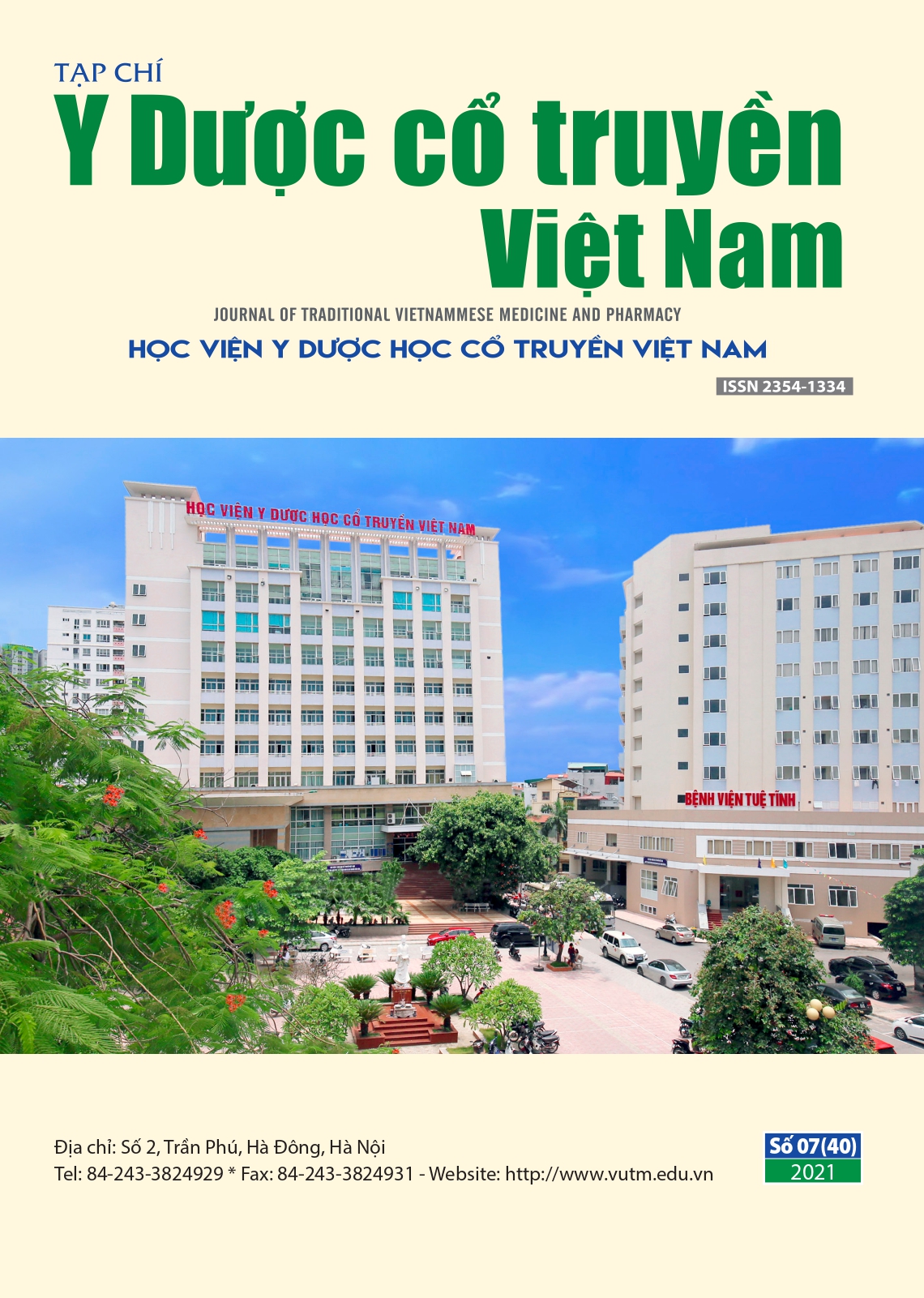The effects of propyl 10β - [(2'β-hydroxy-3'-imidazol)] deoxoartemisinin (32) on rabbit’s kidney functions
Main Article Content
Abstract
This study was conducted at the National Institute of Malariology, Parasitology and Entomology and Hanoi Medical University from February to May, 2021. The compound 10β-[(2'β-hydroxy-3'-imidazol) propyl] deoxoartemisinin (32) was treated orally in experimental rabbits in order to examine whether it affected rabbit’s kidney functions or not.
Methods: The Vietnam Ministry of Health’s and OECD’s guidelines for sub-chronic toxicity testing were applied. The compound (32) was treated orally in two different groups with the dose regimens of 72 and 216 mg/kg/day × 28 consecutive days, respectively. A control group treated orally with solvent was also tested simultaneously. Two milliliters of blood were pulled out from each rabbit’s ear vein on day 0 (before testing), day 14 (the middle of testing) and day 29 (after stopping taking 32). All of those blood samples were tested for serum creatinine. On day 29 and day 43 (after 15 days stopping taking 32), rabbits were operated to observe the generally renal observations and microbody structures of kidney cells.
Results: The rabbit’s serum creatinine concentrations in the two (32)-treated groups were not significantly different from the control group. Besides, these indices on days 14 and 29 did not change significantly compared to that before taking the compound (32) on day 0 (the p values > 0.05).
The macroscopic morphology of the rabbit’s kidneys in all experimental groups observed on days 29 and 43 were normal. Microscopically, rabbits’ kidney structures of all the groups had mild glomerular congestions with the ratios of 3/6 (50.00%), 4/6 (66.67%) and 5/6 (83.33%), respectively. In particular, with the dose regimen of 216 mg/kg/day × 28 consecutive days, 2/6 of rabbits (33.33%) had interstitial congestions.
Conclusion: The compound (32) at the dose regimens of 72 × 28 consecutive days (human equivalent dose) dit not affect rabbit’s kidney functions. In contrast, at the dose of 216 mg/kg/day × 28 consecutive days, (32) tended to cause adverse effects on renal cells. Nonetheless, renal cells were normal after 15 days stopping taking drug.
Article Details
Keywords
10β-[(2'β-hydroxy-3'-imidazol) propyl] deoxoartemisinin (32), rabbit, kidney function, biochemical parameter, serum creatinine, macroscopic morphology, microstructure.
References
2. Trương Văn Như, Đoàn Hạnh Nhân, Bùi Thị Sáu, Lê Minh Đạo, Nguyễn Thị Minh Thu, Đỗ Mạnh Hà (2004), “Nghiên cứu độc tính bán cấp của trifluoromethylhydroartemisinin (BB101) trên khỉ”, Phòng chống bệnh sốt rét và các bệnh ký sinh trùng, số 6, tr. 44-49.
3. Trương Văn Như, Đoàn Hạnh Nhân, Bùi Thị Sáu, Nguyễn Thị Minh Thu và cộng sự (2005), “Nghiên cứu độc tính bán trường diễn của 16 - Piperazinoethanol - 10α - Triluoromethyl Anhydrodihydro Arrtemisinin (BB134) trên động vật thực nghiệm”, Phòng chống bệnh sốt rét và các bệnh ký sinh trùng, số 6, tr. 15-22.
4. OECD (2008), “Repeated dose 28-oral toXicity study in rodents”, OECD guidelines for the testing of chemicals, No. 407.
5. Papiya Bigoniya, Taranginee Sahu, Vikalp Tiwari (2015), “Hematological and biochemical effects of sub-chronic artesunate exposure in rats”, Toxicology reports, 2, 280-288.
6. Nguyễn Thị Minh Thu (2008), Nghiên cứu tác dụng trên kí sinh trùng sốt rét và độc tính trên thực nghiệm của thuốc sốt rét phối hợp Dihydroartemisinin – Piperaquin do Việt Nam sản xuất, Luận án tiến sĩ Dược học
- Viện Dược Liệu.
7. Nguyễn Thị Minh Thu, Ngô Việt Thành, Tạ Thị Tĩnh, Nguyễn Mạnh Hùng và cộng sự (2011), “Nghiên cứu hiệu lực in vitro của 5 dẫn xuất artemisinin và độc tính cấp của 10β-[(2’β-hidroXy-3’-imidazol) propyl] deoXoartemisinin”, Tạp chí Dược học, (số 428), tr.31-34.
8. Nguyễn Thị Minh Thu, Nguyễn Lương Hiếu (2020), “Tác dụng in vivo và độc tính cấp đường uống của 10β-[2’β-hidroXy-3’-imidazol) propyl] deoXoartemisinin (32)”, Tạp chí Y Dược cổ truyền Việt Nam, tập 7, (số 32), tr.35-45.
9. Trường Đại học Dược Hà Nội - Chương trình Phòng chống sốt rét Quốc gia (2016), Cẩm nang hướng dẫn sử dụng thuốc điều trị sốt rét, Nhà xuất bản Thanh Niên, Hà Nội.

